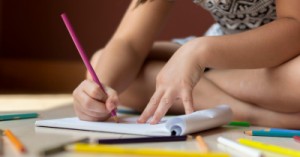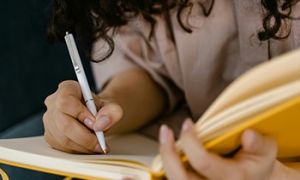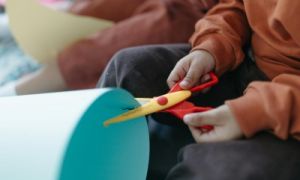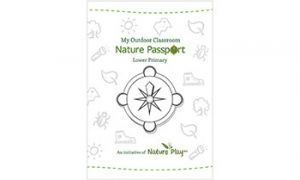When celebrations are well thought out—integrating community input, respecting complexity, and linking meaningfully with the curriculum—they transform into powerful learning experiences. But when they become obligatory, surface-level gestures, they risk doing more harm than good by trivializing cultural significance. Here are some reflective questions you can ask to guide your decision on which significant cultural event to celebrate in an early childhood setting.
Understanding the Event's Core Meaning
-
What is the cultural significance of this event? Investigate the history, traditions, and core values it represents. How can these be conveyed authentically to young learners?
-
What stories or lessons are at the heart of this event? Determine how these narratives can be integrated into activities that are engaging yet sensitive to the complexity of the culture.
Ensuring Cultural Authenticity and Respect
-
Are we representing this culture authentically and respectfully? Ask if there are experts or community voices that can validate or guide your celebration plan to ensure accuracy and respect.
-
How can we involve members of the respective cultural community in the planning process? Consider opportunities for genuine collaboration rather than creating a set of activities from an external perspective.
Fostering Educational and Developmental Value
-
Does this event support the curriculum and contribute to the developmental needs of young children? Reflect on whether the event’s themes can be broken down into age-appropriate, interactive, and sensory-based learning experiences.
-
How can this celebration promote social and emotional growth? Examine ways to encourage empathy, curiosity, and an appreciation for diversity through activities, storytelling, or art.
Balancing Inclusion and Avoiding Tokenism
-
What risks are there of this celebration becoming a tokenistic gesture? Consider if the event might be reduced to a superficial activity and how you might weave its lessons into ongoing, meaningful learning.
-
How can we ensure that the celebration is part of a broader conversation about culture, rather than an isolated event? Envision how it can connect with daily learning opportunities, creating a continuous dialogue rather than a one-off experience.
Community Relevance and Continuous Engagement
-
Is the event relevant and resonant with the local community and families? Evaluate if the celebration reflects the lived experiences or heritage of the children you work with.
-
How can families and the local community contribute to or extend the celebration beyond the classroom? Look for ways to make the event an inclusive moment that bridges school and home, encouraging shared experiences and learning.
Measuring Impact and Adaptability
-
How will we know if the celebration is genuinely engaging and effective? Plan for feedback mechanisms—whether through observation, child reflections, or community input—to assess its impact and guide future planning.
-
Can the learnings from this event be reinforced throughout the year? Think about how elements of the celebration might be integrated into the curriculum or revisited in subsequent activities to deepen understanding over time.
Each of these questions can help ensure that your decision-making process is thoughtful, deliberate, and focused on genuine learning rather than just ticking a calendar box. They invite you to delve into the “why” and “how” behind each potential celebration, ensuring it enriches the children’s learning environment in a meaningful, respectful, and engaging way.
Further Reading
Q: Do We Need To Celebrate Every Significant Cultural Event In The Calendar Each Month
Avoiding Cultural Tokenism In Early Childhood Settings
Tokenism In Early Childhood
Celebrating Multiculturalism in Childcare
Strategies To Ensure Zero Tolerance For Racism In Early Childhood







 Here is the list of the EYLF Learning Outcomes that you can use as a guide or reference for your documentation and planning. The EYLF
Here is the list of the EYLF Learning Outcomes that you can use as a guide or reference for your documentation and planning. The EYLF The EYLF is a guide which consists of Principles, Practices and 5 main Learning Outcomes along with each of their sub outcomes, based on identity,
The EYLF is a guide which consists of Principles, Practices and 5 main Learning Outcomes along with each of their sub outcomes, based on identity, This is a guide on How to Write a Learning Story. It provides information on What Is A Learning Story, Writing A Learning Story, Sample
This is a guide on How to Write a Learning Story. It provides information on What Is A Learning Story, Writing A Learning Story, Sample One of the most important types of documentation methods that educators needs to be familiar with are “observations”. Observations are crucial for all early childhood
One of the most important types of documentation methods that educators needs to be familiar with are “observations”. Observations are crucial for all early childhood To support children achieve learning outcomes from the EYLF Framework, the following list gives educators examples of how to promote children's learning in each individual
To support children achieve learning outcomes from the EYLF Framework, the following list gives educators examples of how to promote children's learning in each individual Reflective practice is learning from everyday situations and issues and concerns that arise which form part of our daily routine while working in an early
Reflective practice is learning from everyday situations and issues and concerns that arise which form part of our daily routine while working in an early Within Australia, Programming and Planning is reflected and supported by the Early Years Learning Framework. Educators within early childhood settings, use the EYLF to guide
Within Australia, Programming and Planning is reflected and supported by the Early Years Learning Framework. Educators within early childhood settings, use the EYLF to guide When observing children, it's important that we use a range of different observation methods from running records, learning stories to photographs and work samples. Using
When observing children, it's important that we use a range of different observation methods from running records, learning stories to photographs and work samples. Using This is a guide for educators on what to observe under each sub learning outcome from the EYLF Framework, when a child is engaged in
This is a guide for educators on what to observe under each sub learning outcome from the EYLF Framework, when a child is engaged in The Early Years Learning Framework describes the curriculum as “all the interactions, experiences, activities, routines and events, planned and unplanned, that occur in an environment
The Early Years Learning Framework describes the curriculum as “all the interactions, experiences, activities, routines and events, planned and unplanned, that occur in an environment


